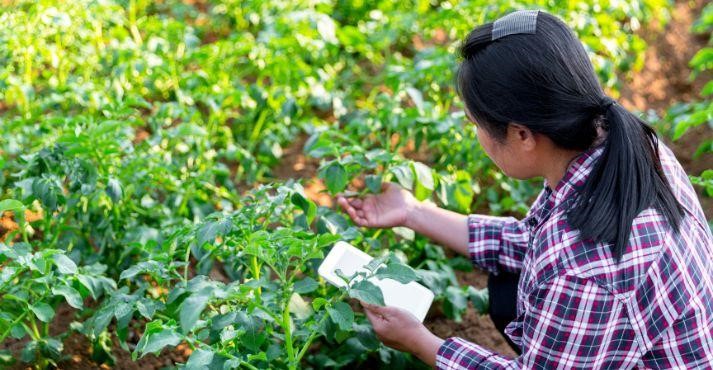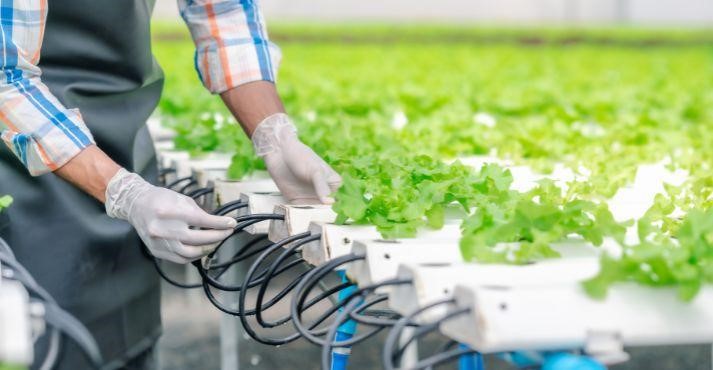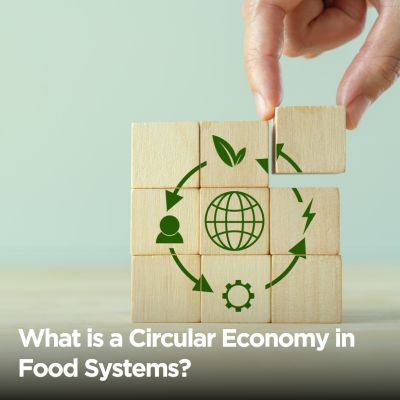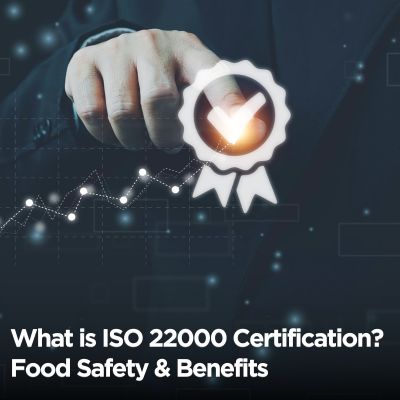Food security is a crucial concept that refers to the ability of people to access enough safe and nutritious food to meet their dietary needs for a healthy life.
It is about food availability and ensuring a stable food supply accessible to everyone, regardless of their economic or social status.
Food security is a significant issue globally, with nearly 820 million people worldwide suffering from chronic hunger, according to the United Nations Food and Agriculture Organization (FAO).
Ensuring food security in Singapore and Southeast Asia is particularly important due to the region’s vulnerability to climate change, population growth, and reliance on food imports.
In this write-up, we will explore food security, dive into its components, the causes and consequences of food insecurity, and potential solutions to increase it in this region and beyond.
Understanding Food Security
Food security is a comprehensive concept that ensures people have regular access to sufficient, safe, and nutritious food to maintain a healthy and active life. It encompasses four key dimensions: availability, access, utilization, and stability.
Availability refers to having a consistent food supply, whether locally or imported. Food access means people have the economic and physical resources to obtain food. Utilization involves the proper use of food through balanced diets, clean water, and adequate sanitation.
Stability ensures that food availability and access remain reliable over time, without disruptions due to natural disasters or economic crises.
In recent years, innovations like agritech and urban farming have become essential in increasing food security, especially in densely populated regions like Singapore.
These technologies help improve the stable food supply by making food production more efficient and resilient to challenges.
Components of Food Security

Food security is built upon four essential components: availability, access, utilization, and stability. These elements work together to ensure everyone can obtain the food they need for a healthy life.
- Availability: This component refers to having sufficient quantities of food available consistently. It involves both the production of food and its distribution, ensuring that food is present in markets and stores where people can purchase it. A stable food supply is crucial for maintaining food availability.
- Access: Access to food means people have the economic means and physical ability to obtain food. This includes having enough income to purchase food and having local markets or distribution networks that make food physically accessible to everyone.
- Utilization: Utilization ensures food is used effectively to meet dietary needs. This involves proper food preparation, a balanced diet, clean water, and adequate sanitation, all vital for good health.
- Stability: Stability ensures that the other three components—availability, access, and utilization—are reliable and sustained over time. This means that food security is maintained even in the face of natural disasters, economic downturns, or other disruptions, preventing food insecurity from taking hold.
Importance of Food Security
Food security is a fundamental aspect of societal well-being, crucial to economic stability, social harmony, and public health. Ensuring that all people have consistent access to sufficient, safe, and nutritious food is vital for any nation’s overall stability and progress.
1. Economic Stability
Food security is directly linked to economic growth and stability. When a country maintains a stable food supply, it supports the workforce’s productivity and reduces the economic burden caused by malnutrition and food-related illnesses.
For instance, food security is a crucial priority in Singapore due to the nation’s heavy reliance on food imports.
The Singapore Food Agency (SFA) has implemented various strategies, such as promoting vertical farming innovations, to boost local food production and reduce vulnerability to global supply disruptions.
These efforts contribute to Singapore’s economic resilience by ensuring that food-related industries thrive, creating jobs, and stabilizing the economy during global crises.
2. Social Stability
Food security also plays a critical role in reducing social unrest and inequality. When people have reliable access to food, it helps to minimize the disparities between different social and economic groups.
Food insecurity, however, can lead to increased tension, social unrest, and conflict as people struggle to meet their basic needs. In regions where food scarcity is prevalent, the competition for limited resources can exacerbate existing inequalities and fuel instability.
By ensuring that all individuals have access to food, societies can advance greater social harmony and reduce the risk of conflict.
3. Health and Nutrition
The importance of food security for public health and nutrition cannot be overstated. Adequate food access is essential for preventing malnutrition and promoting overall health. In Southeast Asia, malnutrition remains a significant issue, with millions of people, particularly children, affected by undernutrition.
According to recent statistics, nearly 27.4% of children in Southeast Asia suffer from stunting due to chronic malnutrition.
Food security initiatives can help reduce these alarming figures and promote better health outcomes across the region by improving access to food and ensuring its nutritional quality.
State of Food Security in Southeast Asia

Food security in Southeast Asia has seen significant progress over the past few decades, thanks to increased agricultural production, poverty reduction, and a growing focus on sustainability.
However, despite these advancements, the region still faces considerable challenges that threaten the stability of its food systems.
1. Progress in Food Security
One of Southeast Asia’s most notable achievements has been the substantial increase in agricultural production. Countries like Vietnam, Thailand, and Indonesia have successfully boosted their rice production, contributing to a more stable food supply across the region.
Poverty rates have decreased significantly, leading to millions of people having better access to food.
For example, Vietnam’s poverty rate fell from nearly 60% in the 1990s to below 10% by 2020, largely due to economic reforms and improved agricultural productivity.
This progress has positively impacted food security, helping to reduce hunger and improve nutritional outcomes for many in the region.
2. Remaining Challenges
Despite these advancements, Southeast Asia still needs to achieve comprehensive food security.
- Uneven Distribution of Food: While agricultural production has increased, food distribution remains uneven across the region. Pockets of hunger persist, particularly in rural and remote areas. According to the UN, nearly 60 million people in Southeast Asia still suffer from food insecurity, with countries like Myanmar and the Philippines having some of the highest levels of undernourishment. This uneven distribution underscores the need for improved infrastructure and policies to ensure all individuals have food access.
- Climate Change Impact: Climate change severely threatens food security in Southeast Asia. The region is highly vulnerable to extreme weather events such as droughts, floods, and rising sea levels, which can devastate crops and disrupt food production. For instance, the Mekong Delta, a crucial rice-producing area in Vietnam, faces significant risks from rising sea levels and increased salinity, which threaten the livelihoods of millions of farmers. According to the Asian Development Bank, climate change could reduce crop yields in Southeast Asia by up to 20% by 2050 if no action is taken.
- Rapid Urbanization: Southeast Asia is one of the most rapidly urbanizing regions in the world. While urbanization has driven economic growth, it also puts tremendous pressure on food systems. The growing demand for food in urban areas strains resources and infrastructure, ensuring a stable food supply chain. The shift from rural to urban living has also led to changes in dietary patterns, increasing the demand for processed foods, which can exacerbate health issues such as obesity and diabetes.
3. Success Stories
Amid these challenges, success stories highlight the region’s potential to overcome food security issues. Singapore, for example, has made significant investments in sustainable and precision agriculture to improve its food security.
Despite its limited land for traditional farming, Singapore has pioneered revolutionary farming initiatives, including technologies such as vertical farming and hydroponics to produce food locally.
The Singapore Food Agency (SFA) plays a vital role in ensuring a stable food supply by supporting innovation and resilience in the food sector.
These efforts have positioned Singapore as a regional food security leader, demonstrating that even resource-constrained nations can achieve significant progress through strategic investments and innovation.
Strategies to Achieve Food Security

Achieving food security requires a multifaceted approach that involves sustainable agriculture, technological innovations, supportive government policies, and active community engagement.
These strategies are essential to ensuring that everyone has consistent access to safe, nutritious, and affordable food.
1. Sustainable Agriculture
Sustainable farming practices are critical in maintaining a stable food supply while minimizing environmental impact. By focusing on methods that preserve soil health, reduce chemical usage, and promote biodiversity, sustainable agriculture helps ensure long-term food production.
In Thailand, organic farming initiatives have gained momentum as a way to produce food that is healthier for consumers and the environment. These practices contribute to food security by increasing yields and resilience to climate change and supporting the livelihoods of small-scale farmers.
2. Technological Innovations
Technology has become an indispensable tool in enhancing food production and distribution. Innovations such as foodtech, drones, and the Internet of Things (IoT) transform how food is grown, monitored, and delivered.
Using drones for precision agriculture in Singapore allows farmers to monitor crop health and optimize resource use, leading to higher yields and reduced waste.
Additionally, IoT devices help track and manage food distribution networks, ensuring that food reaches consumers efficiently and with minimal loss.
These technological advancements are crucial for boosting food security in densely populated and resource-constrained regions.
3. Government Policies
Supportive government policies are fundamental to building a resilient food system. Singapore’s “30 by 30” initiative is a prime example of a forward-thinking policy to enhance food security.
This plan aims to produce 30% of the country’s nutritional needs locally by 2030, reducing reliance on imports and increasing self-sufficiency.
The Singapore Green Plan further supports this initiative by promoting sustainable practices and investing in agritech. Such policies adopt innovation and create a regulatory environment that supports developing a robust and sustainable food system.
4. Community Engagement
Engaging local communities in food security strategies is essential for their success. Community-driven projects help ensure food security initiatives are tailored to local needs and resources.
In Kuala Lumpur, urban farming projects have been launched to empower residents to grow their food, reduce food costs, and increase access to food and fresh produce.
These projects also promote environmental stewardship and create more decisive community social bonds. Food security strategies become more inclusive and sustainable by involving people at the grassroots level.
Conclusion
Understanding what is food security is critical for addressing the challenges that impact economic stability, social harmony, and public health.
Significant progress has been made in Southeast Asia, but issues like uneven food distribution, climate change, and rapid urbanization continue to threaten the region.
The region can improve its food systems through sustainable agriculture, technological innovations, supportive government policies, and community engagement.
Singapore’s initiatives, like the “30 by 30” plan, demonstrate how strategic efforts can effectively address food security and ensure a resilient and healthy future for all.





























